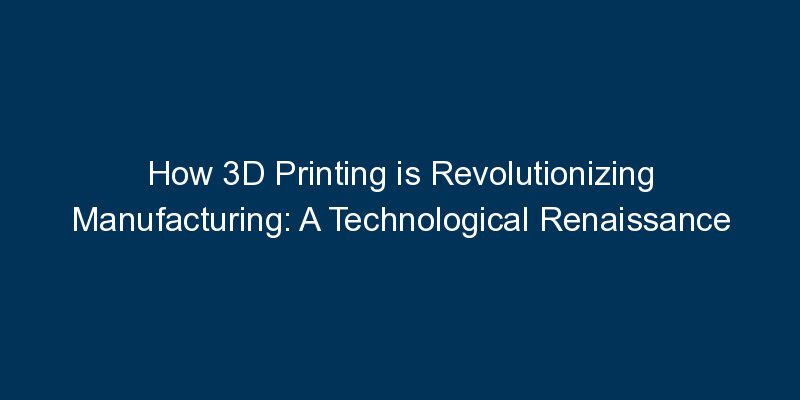Introduction
The advent of 3D printing has ushered in a new era for manufacturing, disrupting traditional methods and opening doors to unparalleled possibilities. This blog explores the transformative impact of 3D printing on the manufacturing industry, examining the technology, applications, and the revolutionary changes it brings to the production landscape.
Unveiling the World of 3D Printing
1. Defining 3D Printing Technology
3D printing, also known as additive manufacturing, is a process of creating three-dimensional objects layer by layer from digital models. Unlike traditional subtractive manufacturing methods, which involve cutting away material, 3D printing adds material layer by layer, allowing for intricate and customized designs.
2. Key Components of 3D Printing
- Digital Design: Objects are created using digital 3D models designed with computer-aided design (CAD) software.
- Printing Process: 3D printers use various materials, including plastics, metals, and ceramics, to build objects layer by layer.
- Post-Processing: After printing, objects may undergo post-processing steps such as polishing or surface treatment to achieve the desired finish.
Applications of 3D Printing in Manufacturing
3. Prototyping and Rapid Iteration
One of the primary applications of 3D printing is in prototyping. Manufacturers can quickly create prototypes, allowing for rapid iteration and design refinement without the need for extensive tooling.
4. Customized Manufacturing and Personalization
3D printing enables the production of customized and personalized products. From tailored medical implants to unique consumer goods, manufacturers can cater to individual needs with ease.
5. Complex Geometries and Lightweight Structures
The additive nature of 3D printing allows for the creation of complex geometries that would be challenging or impossible with traditional methods. This capability is particularly beneficial in industries such as aerospace, where lightweight structures are crucial.
Impact on Traditional Manufacturing Processes
6. Reduced Material Waste
Traditional manufacturing often involves subtracting material from a larger block, resulting in significant waste. 3D printing, on the other hand, is an additive process, minimizing material waste and promoting sustainability.
7. Streamlined Supply Chains
3D printing can simplify supply chains by enabling on-demand production. Manufacturers can produce parts or products closer to the point of use, reducing the need for extensive inventories and long-distance shipping.
8. Localized Production and Distributed Manufacturing
The decentralization of manufacturing is facilitated by 3D printing. Localized production centers can serve specific regions, allowing for distributed manufacturing networks that respond quickly to market demands.
Challenges and Considerations
9. Material Limitations and Development
While 3D printing has expanded to various materials, certain limitations exist. Ongoing research and development efforts are focused on expanding the range of materials compatible with 3D printing processes.
10. Post-Processing and Finishing Challenges
Achieving desired surface finishes and material properties may require post-processing steps. Addressing post-processing challenges is crucial for ensuring the quality and functionality of 3D-printed components.
Future Trends and Innovations
11. Bioprinting for Medical Applications
The field of bioprinting holds promise for creating living tissues and organs. 3D printing technology may revolutionize healthcare by enabling the production of patient-specific implants and even transplantable organs.
12. Integration with Industry 4.0 and IoT
As part of the Industry 4.0 paradigm, 3D printing is increasingly integrated with the Internet of Things (IoT). Smart 3D printers connected to networks can enhance automation, monitoring, and control in manufacturing processes.
Conclusion
The revolution ignited by 3D printing in manufacturing is rewriting the rules of production, offering unprecedented flexibility, customization, and sustainability. As the technology continues to evolve, its impact on traditional manufacturing processes and the creation of entirely new possibilities is undeniable.
In embracing 3D printing, manufacturers embark on a journey that goes beyond efficiency gains. It’s a journey of innovation, where the boundaries of what is possible in design, production, and customization are continually pushed. The future of manufacturing is being shaped by the layers of progress laid down by 3D printing technology.

















Comments